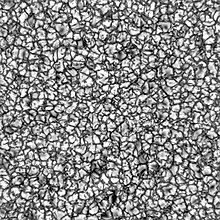|
Daniel K. Inouye Solar Telescope
The Daniel K. Inouye Solar Telescope (DKIST) is a scientific facility for studies of the Sun at Haleakala Observatory on the Hawaiian island of Maui. Known as the Advanced Technology Solar Telescope (ATST) until 2013, it was named after Daniel K. Inouye, a US Senator for Hawaii.[1] It is the world's largest solar telescope, with a 4-meter aperture.[2][3] The DKIST is funded by National Science Foundation and managed by the National Solar Observatory. The total project cost is $344.13 million.[4] It is a collaboration of numerous research institutions. Some test images were released in January 2020.[5] The end of construction and transition into scientific observations was announced in November 2021.[6] The DKIST can observe the Sun in visible to near-infrared wavelengths and has a 4.24-meter primary mirror in an off-axis Gregorian configuration that provides a 4-meter clear, unobstructed aperture. Adaptive optics correct for atmospheric distortions and blurring of the solar image, which enables high-resolution observations of features on the Sun as small as 20 km (12 miles). The off-axis, clear aperture design avoids a central obstruction, minimizing scattered light. It also eases operation of adaptive optics and digital image reconstruction such as speckle imaging. The site on the Haleakalā volcano was selected for its clear daytime weather and favourable atmospheric seeing conditions.[7] It commenced its first science observations on February 23, 2022, signaling the start of its year-long operations commissioning phase.[8] ConstructionThe contract to build the telescope was awarded in 2010, with a then-planned completion date of 2017.[9] Physical construction at the DKIST site began in January 2013,[10] and work on the telescope housing was completed in September 2013.[11] The primary mirror was delivered to the site the night of 1–2 August 2017[12] and the completed telescope provided images of the sun in unprecedented detail in December 2019. Further instruments, to measure the Sun's magnetic field, were to be added in the first half of 2020.[3] Completion of construction and transition into operational phase with the first scientific observations was announced on November 22, 2021. At the time, the telescope had been over 25 years in the making (including preliminary design etc. not just the building).[6] Main telescope structure The 75 mm thick f/2 primary mirror is 4.24 meters in diameter with the outer 12 cm masked, leaving a 4-meter off-axis section of a 12-meter diameter, f/0.67 concave parabola. It was cast from Zerodur by Schott and polished at the Richard F. Caris Mirror Laboratory of the University of Arizona and aluminized by the AMOS mirror coating facility.[13][14] The 0.65-meter secondary mirror, a concave ellipsoid with a focal length of 1 meter, was made from silicon carbide and is mounted on a hexapod to compensate for thermal expansion and bending of the telescope structure keeping the mirror in its optimal position. Adaptive and active opticsOne key component of the DKIST is its adaptive and active optics system, which is responsible for correcting distortions in the telescope's images caused by the Earth's atmosphere. These distortions, known as "seeing," can be caused by temperature gradients and other factors in the atmosphere and can significantly degrade the quality of telescope images.[15][16] The DKIST's adaptive optics system uses a deformable mirror, which can be adjusted in real-time to correct for atmospheric distortions. The system also includes a wavefront sensor, which measures the distortions in the incoming light and feeds this information back to the deformable mirror to make the necessary adjustments.[17][15] The active optics system, on the other hand, is responsible for maintaining the telescope's focus and alignment. It uses a network of sensors and actuators to constantly monitor and adjust the position of the telescope's mirrors, ensuring that they remain properly aligned and focused.[15] Together, the adaptive and active optics systems allow the DKIST to produce some of the highest-resolution images of the Sun ever taken. These images can be used to study the Sun's surface and atmosphere in greater detail, helping scientists to better understand the processes that drive solar activity and space weather.[18] Instrumentation  DKIST is expected to have five first-generation instruments.[20] Visible Broadband Imager (VBI)The VBI is a diffraction-limited two-channel imager, with each path made of an interference filter and a digital scientific CMOS sensor camera that samples the image of the Sun. Each camera features 4k×4k pixels. The interference filters work as a band-pass filter that only transmits a selected wavelength range (i.e. color) of the sunlight. Four different interference filters are available in each channel that are mounted in a motorized fast-change filter wheel. VBI blue channel (45″ field of view)
VBI red channel (69″ field of view)
Per wavelength, a burst of images shall be recorded with high frame rate (30 fps), digitally analyzed and formed into a single sharpened image (speckle-reconstruction). VBI is fabricated by the National Solar Observatory. Visible Spectro-Polarimeter (ViSP)ViSP is fabricated by the High Altitude Observatory. Visible Tunable Filter (VTF)VTF is fabricated by the Kiepenheuer-Institut für Sonnenphysik. Diffraction-Limited Near-InfraRed Spectro-Polarimeter (DL-NIRSP)DL-NIRSP is a diffraction grating based integral field spectrograph with a spectral resolution R=250000. DL-NIRSP is fabricated by Institute for Astronomy (IfA) of the University of Hawaii. Cryogenic Near-InfraRed Spectro-Polarimeter (Cryo-NIRSP)Cryo-NIRSP is fabricated by Institute for Astronomy (IfA) of the University of Hawaii. PartnersAs of 2014[update], twenty-two institutions had joined the collaboration building DKIST:[21]
See also
References
External links
|
||||||||||||||||||||||||||||||||||||||||
Portal di Ensiklopedia Dunia

